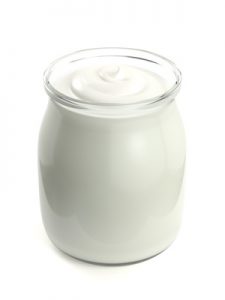
The aim of this collaborative study between Eptes and universities in Greece, Germany, and Poland was to investigate the capacity of different yeast strains to grow on cow and goat acid whey, to assimilate different carbon sources and to produce aroma compounds. Twenty different yeasts (with GRAS status) were tested. Two kinds of acid whey, from cows and goats, were characterized in terms of their main chemical components (carbohydrates, organic acids, aminoacids, FAN, total nitrogen) using HPLC techniques and chemical methods. The most effective yeast strains were found to be those belonging to the genera Kluyveromyces, Wickerhamomyces and Saccharomyces. Three K. marxianus strains, one wine strain S. cerevisiae and one strain of W. anomalus were selected based on their ability to grow on whey agar, assimilation profiles and aroma profiles. Their ability to grow on mixed cow and goat acid whey under varying environmental conditions (pH level, supplementation, temperature, oxygen availability) was evaluated.
A selection of 80 samples were evaluated for their flavours profile compositions. The influence of pH, temperature, aeration and supplementation level on the volatile fraction of acid whey fermented with selected yeast strains, i.e. Saccharomyces cerevisiae, Wickerhamomyces anomalus and Kluyveromyces marxianus, was investigated in terms of aroma compounds production. Headspace solid-phase microextraction technique (HS-SPME) coupled to the gas chromatography–mass spectrometry (GC-MS) analysis was applied to characterize volatile compounds of the samples. More than 50 compounds were detected, which belonged to different chemical classes and could come either from different reaction pathways occurring during fermentation or from raw material. The most important compounds were found to be 3-methyl-1-butanol, ethyl alcohol, phenylethyl alcohol, ethyl acetate, ethyl octanoate, 2-phenylethyl acetate, acetic acid, butanoic acid, etc. that contribute to the aroma character of the samples with alcoholic, malty, cheesy, sour, sweet and rose-like notes. In general, the aroma profile of the samples depended on the yeast strain used, and was greatly affected by the temperature and aeration conditions applied during fermentation.
